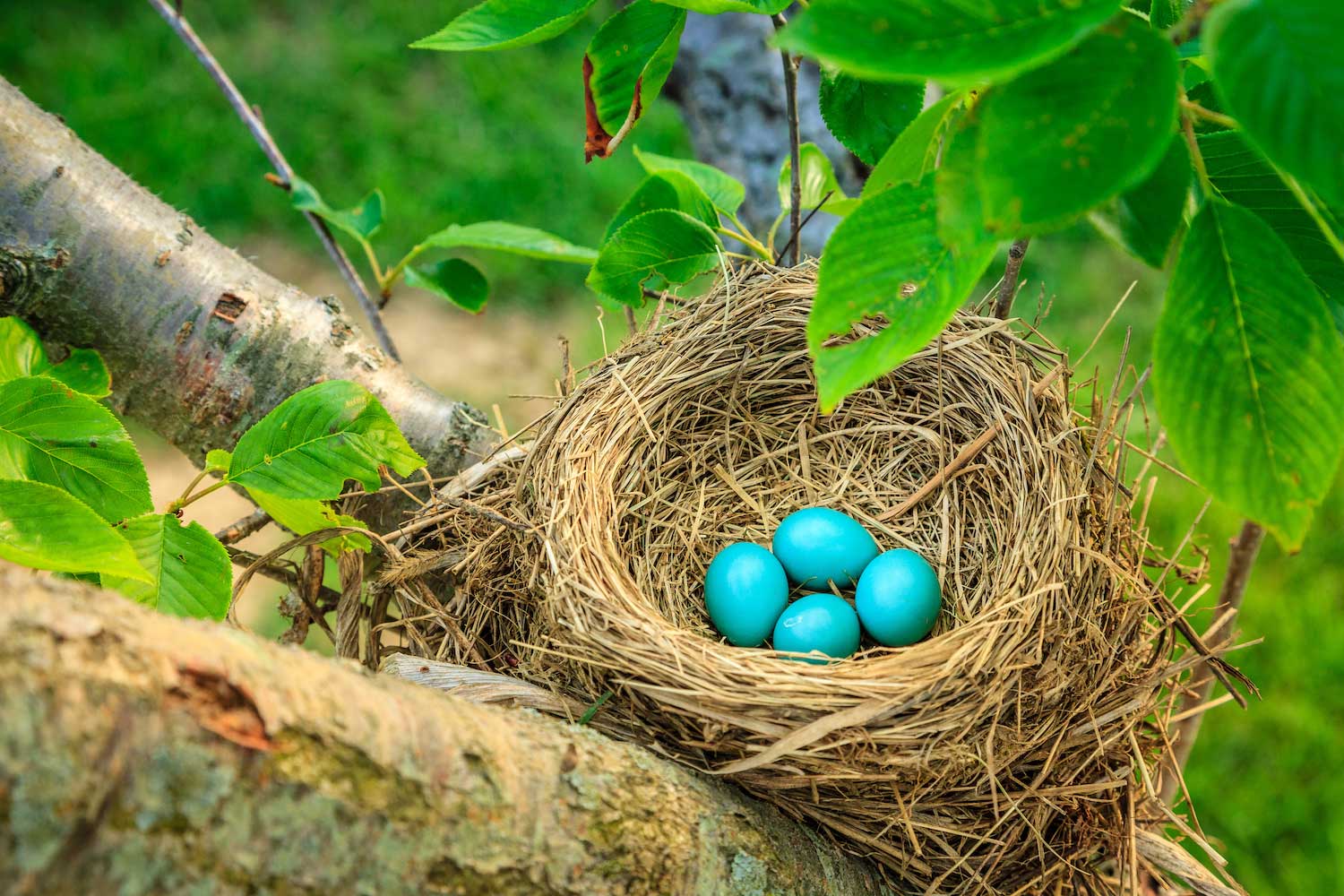Nature curiosity: Why are robin eggs blue?

The color of a robin's eggs is such a lovely shade of blue that the color even has a specific name for it — robin's egg blue. Crayola makes crayons in robin's egg blue, and the trademarked blue color used by luxury jeweler Tiffany & Co. is a shade of robin's egg blue.
Where that blue color comes from might surprise you. The color of a robin's eggs doesn't have anything to do with what the birds eat. It's actually because of pigments in the female robins' blood, according to Journey North. That lovely shade of blue comes from a pigment called biliverdin that forms when hemoglobin blood cells rupture. The biliverdin is carried in the robin's bloodstream to where the eggshells are produced.
Fun fact: Biliverdin isn't unique to robins. Humans have this pigment too, and it's what makes our bruises look bluish-green, Bird Watching Daily reports. And robins aren't alone in laying blue eggs. Many birds lay blue eggs, including cedar waxwings, eastern bluebirds, blue jays, European starlings, house finches and red-winged blackbirds. The shade of blue varies among species, and some birds also lay speckled eggs rather than pure blue eggs.
The spectrum of color for bird eggs includes many other shades as well, from white to green to red. All the color variations are the result of two pigments: the aforementioned biliverdin, which results in eggs in shades of green and blue, and protoporphyrin, which gives eggs a reddish-brown hue. The pigments combine in different quantities to give different species different colored eggs, the Cornell Lab of Ornithology reports. Pale colored eggs have less pigment, while eggs with deeper color have higher pigment concentrations.
Why certain species lay eggs of certain colors isn't entirely understood. For some ground-nesting birds, such as the killdeer, the color of their eggs serves as a camouflage of sorts. Killdeer eggs are buff colored and covered with dark splotches and speckles, according to the Cornell Lab of Ornithology. They build their nests on the ground and often use rocks, shells and sticks to line the shallow depression in the ground. When the eggs are untended, the splotches and speckles help them blend in.
Brightly colored eggs may rely on the pigments to serve as a sunblock, protecting the embryos within from intense sunlight. This might explain why most cavity nesting birds lay white eggs. They don't need pigment to serve as sunblock because they are out of direct sunlight.
When it comes to robins and their blue eggs, getting to see the color for yourself can be tricky because female robins spend about two weeks incubating their eggs, and during that time they rarely leave them. They spend about 50 minutes of every hour incubating, Journey North reports.
A robin's typical clutch will include between three and five eggs, and she will incubate them for 12 to 14 days before they hatch. The young robins are helpless when they hatch and usually don't even have any feathers. They aren't helpless for long, however. They will fledge the nest about two weeks after hatching and spend the next week or two learning to fly, Journey North reports.
